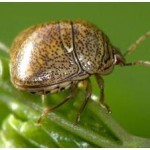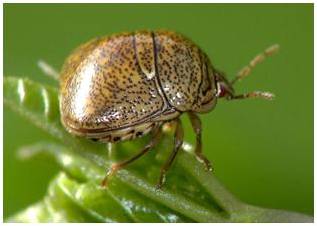If you are aware of any fields in the southern portion of the state (particularly in Salem, Cumberland and Cape May) that has kudzu please contact me by e-mail @ bamka@njaes.rutgers.edu.
 As you may have heard the kudzu bug is knocking on New Jersey’s door. In July of 2013 the kudzu bug was found in Sussex County Delaware, just a relatively small trip across the Delaware Bay from New Jersey. This rather new pest is something our soybean industry needs to keep a watchful eye on. You may have read in different farming publications about the presence of bean platasipid (Megacopta cribraria) or more commonly the kudzu bug in the southeastern US. It is referred to as the kudzu bug because it has a tendency to feed on kudzu. Feeding on kudzu has not been viewed as a bad thing in the south. However, in the southeastern US kudzu bug has become a concern because it is also a pest of soybeans.
As you may have heard the kudzu bug is knocking on New Jersey’s door. In July of 2013 the kudzu bug was found in Sussex County Delaware, just a relatively small trip across the Delaware Bay from New Jersey. This rather new pest is something our soybean industry needs to keep a watchful eye on. You may have read in different farming publications about the presence of bean platasipid (Megacopta cribraria) or more commonly the kudzu bug in the southeastern US. It is referred to as the kudzu bug because it has a tendency to feed on kudzu. Feeding on kudzu has not been viewed as a bad thing in the south. However, in the southeastern US kudzu bug has become a concern because it is also a pest of soybeans.
The NJDA could use your help in tracking the potential presence of Kudzu bug in the state. [Read more…]


